Teams and Enterprise
Get started with your team!
Plugin Set Up
Our plugins for Visual Studio Code and JetBrains are our most popular plugins. The installation steps for these two are given below. For other IDEs and editors like Eclipse, Visual Studio, Neovim, Google Colab, and more, visit our download page to get started.These steps do not apply for enterprises on a self-hosted plan.
If you are an enterprise user, please refer to the instructions in your enterprise portal.
- JetBrains
- Visual Studio Code
- Vim / Neovim
- Visual Studio
- Jupyter Notebook
- Chrome
- Eclipse
For remote development environments, use the “Windsurf (Remote Development)” plugin instead. See the Remote Development section below.
1
Install Plugin
Open the 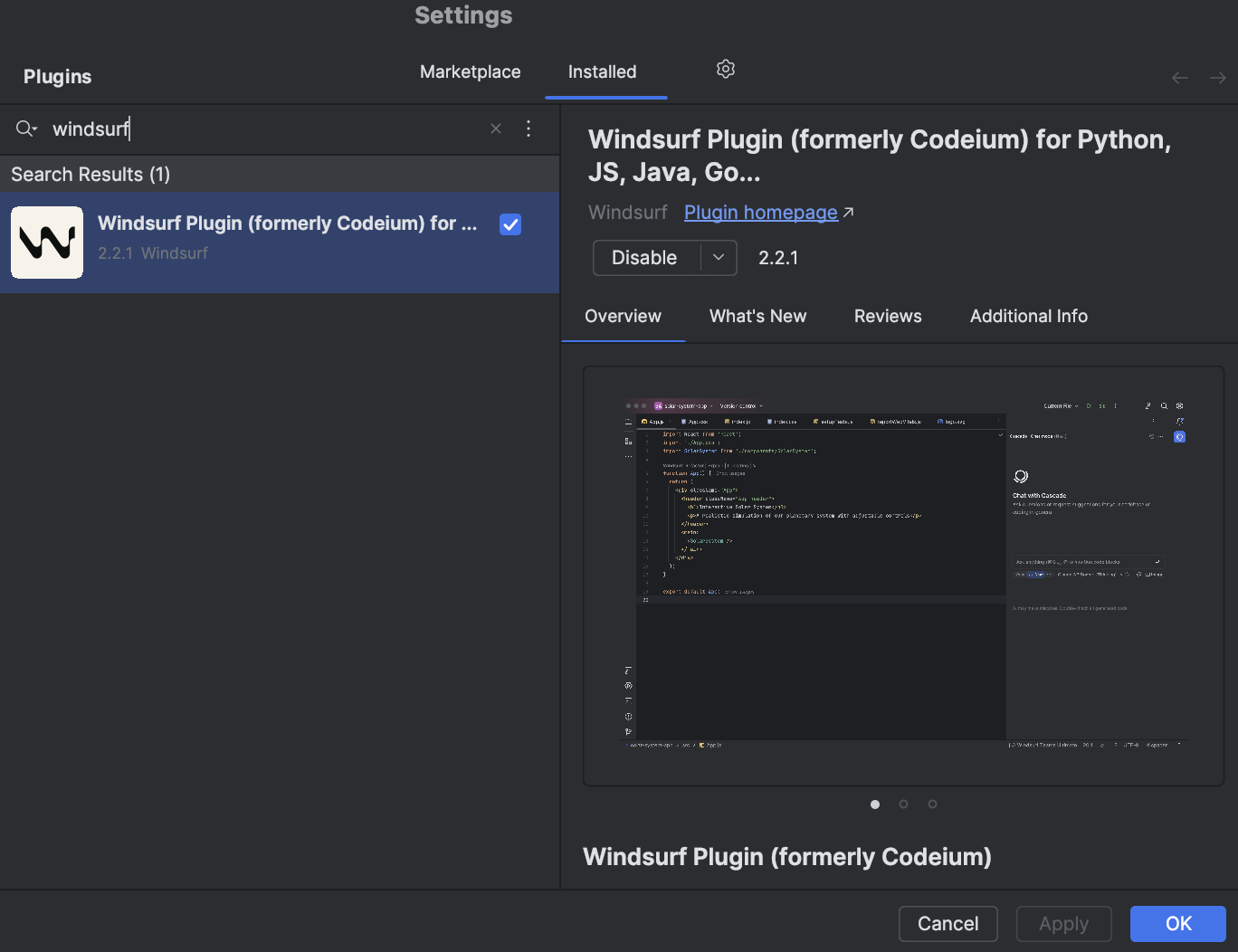
Plugins menu in your JetBrains IDE. The shortcut for this is ⌘+, on Mac and Ctrl+, on Linux/Windows. It is also accessible from the settings menu.
Search for the Windsurf plugin, and install it. The plugin loader will prompt you to restart the IDE.
2
Wait for Language Server
Upon successful installation, Windsurf will begin downloading a language server.
This is the program that communicates with our APIs to let you use Windsurf’s AI features.
The download usually takes ten to twenty seconds, but the download speed may depend on your internet connection.
In the meantime, you are free to use your IDE as usual.You should see a notification on the bottom right to indicate the progress of the download.

3
Authorize
Open a project. Windsurf should prompt you to log in with a notification popup at the bottom right linking you to an online login page.
Equivalently, click the widget at the right of the bottom status bar and select the login option there.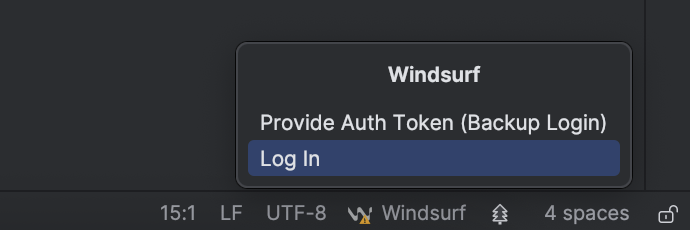
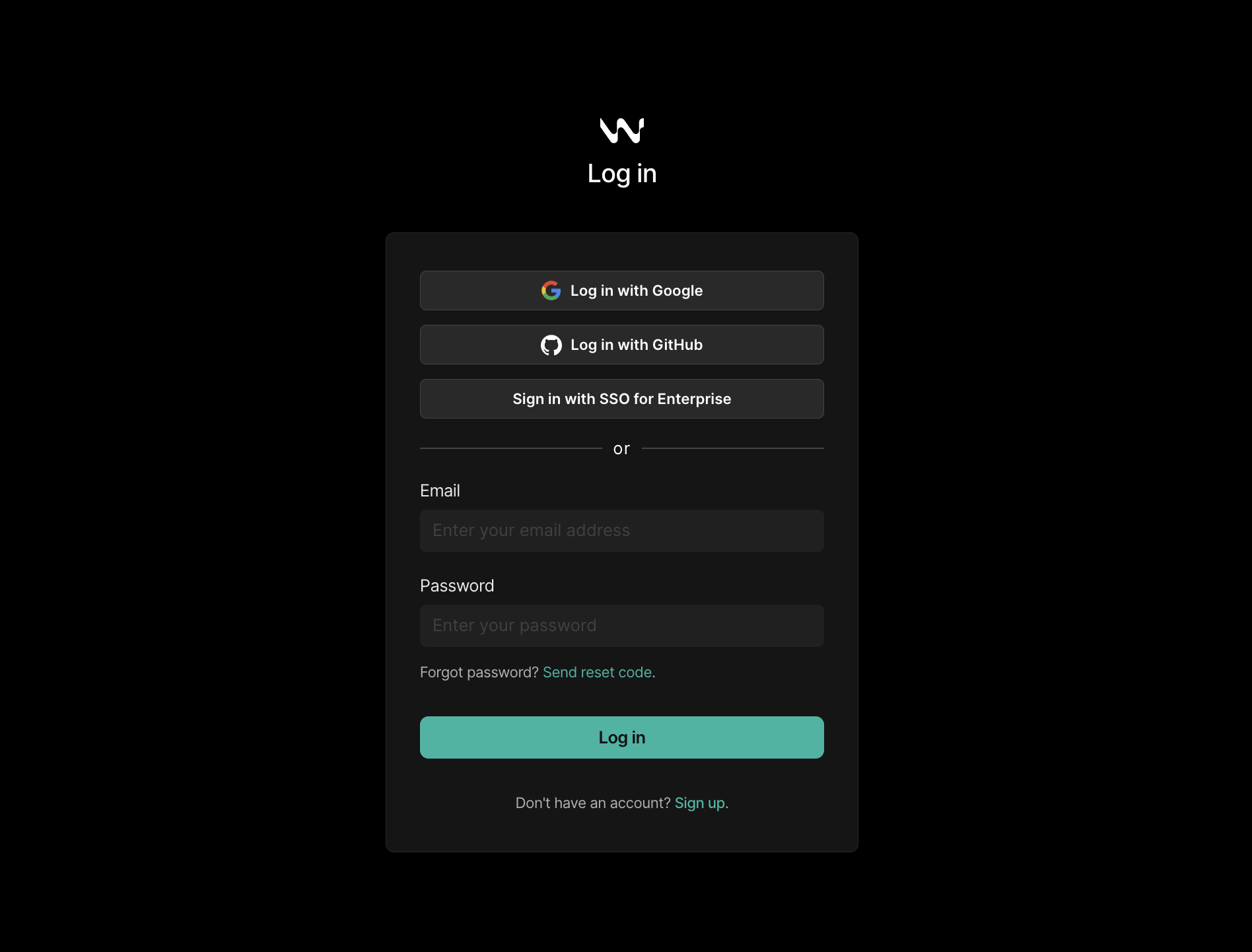




4
All Done!
You can now enjoy Windsurf’s rich AI featureset: Autocomplete, Chat, Command, and more.At any point, you can check your status by clicking the status bar widget at the bottom right.
If logged in, you will have access to your Windsurf settings and other controls.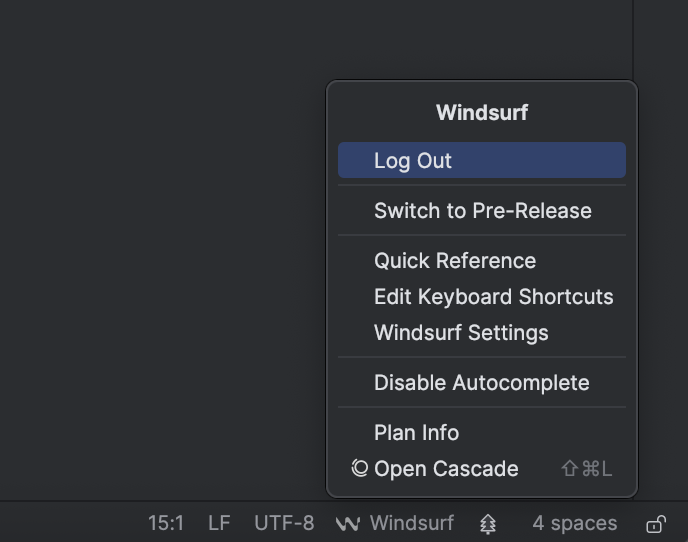

Remote Development
For JetBrains IDEs used in remote development environments, you need to use the separate “Windsurf (Remote Development)” plugin.Requirements
- JetBrains IDE version 2025.1.3 or greater
Installation Steps
1
Install on Host
Open the 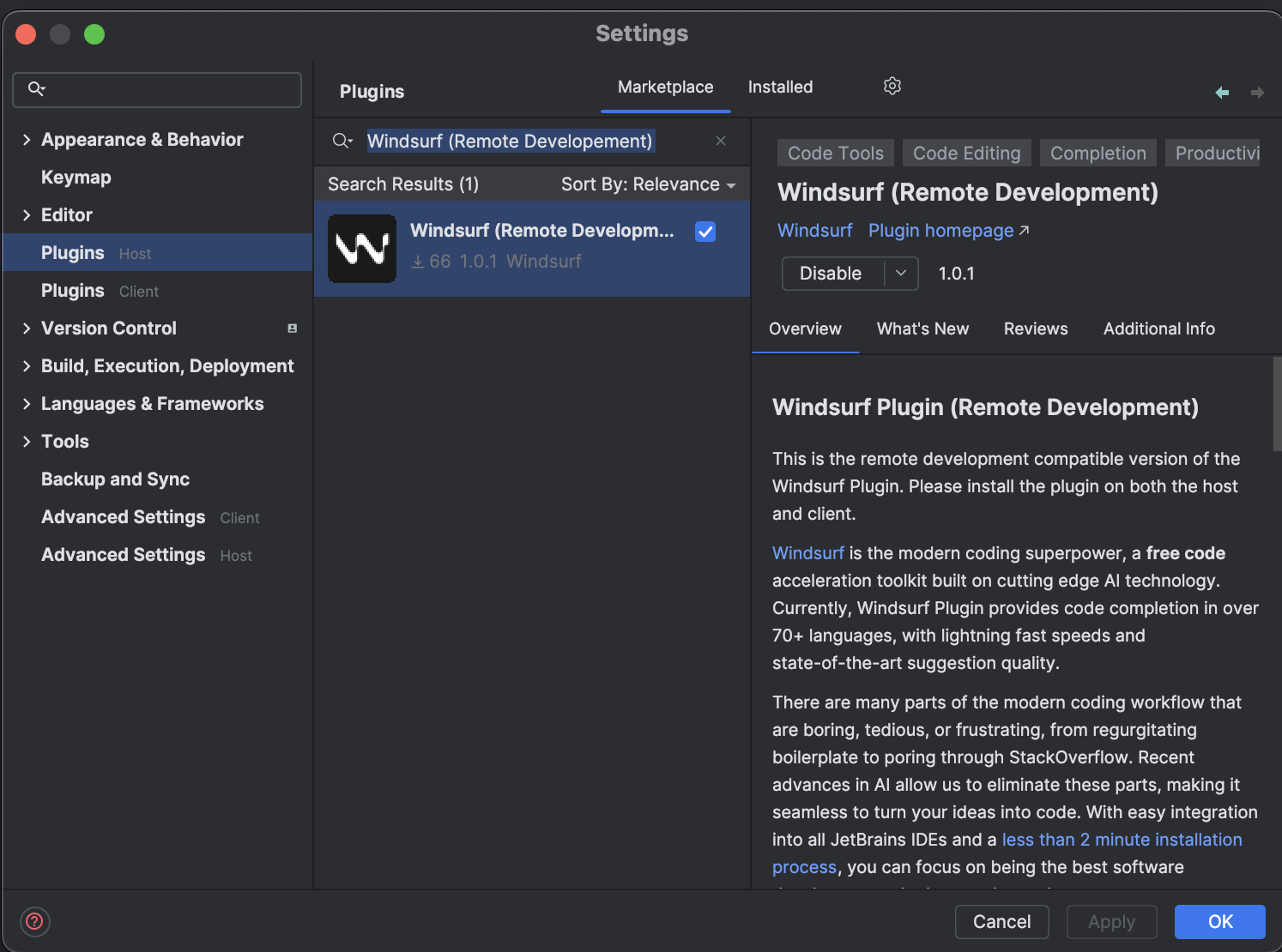
Plugins (Host) menu in your JetBrains IDE. The shortcut for this is ⌘+, on Mac and Ctrl+, on Linux/Windows. It is also accessible from the settings menu.
Search for “Windsurf (Remote Development)” and install it.
Restart your IDE when prompted.
2
Install on Client
Open the 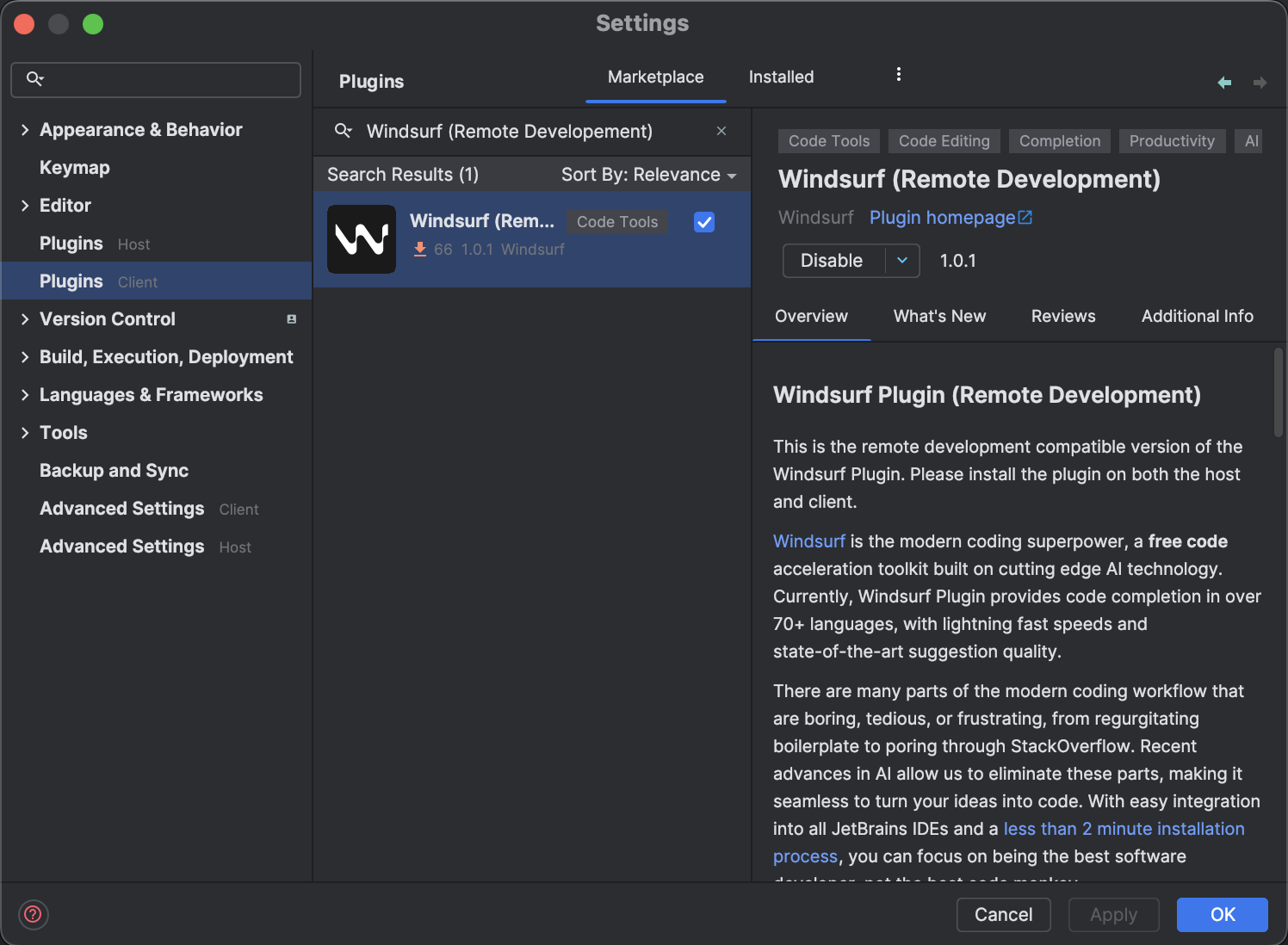
Plugins (Client) menu and search for “Windsurf (Remote Development)”.
Install the plugin and restart the IDE again.
3
Wait for Language Server
After installing the plugin on the host, Windsurf will begin downloading a language server.
This is the program that communicates with our APIs to let you use Windsurf’s AI features.
The download usually takes ten to twenty seconds, but the download speed may depend on your internet connection.
In the meantime, you are free to use your IDE as usual.You should see a notification on the bottom right to indicate the progress of the download.

4
Authorize
After the language server download is completed, Windsurf should prompt you to log in with a notification popup at the bottom right linking you to an online login page.
Equivalently, click the widget at the right of the bottom status bar and select the login option there.





5
All Done!
You can now use Windsurf’s AI features in your remote development environment.